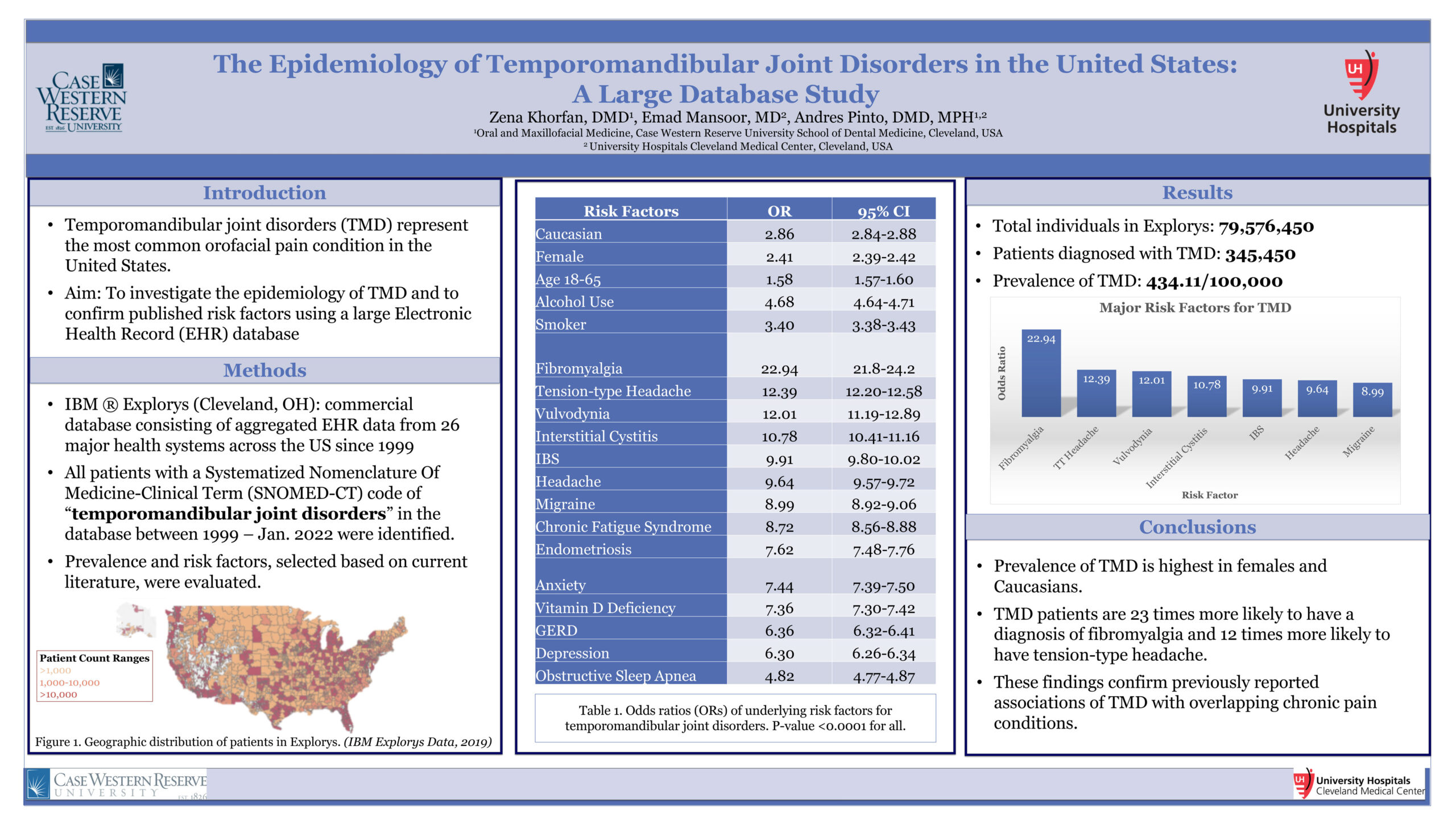The Epidemiology of Temporomandibular Joint Disorders in the United States: A Large Medical Database Study
Author(s): Khorfan, Z1; Mansoor, E2; Pinto, A1,2
Affiliations: 1Oral and Maxillofacial Medicine, Case Western Reserve University School of Dental Medicine, Cleveland, USA; 2 University Hospitals Cleveland Medical Center, Cleveland, USA
Aim of Investigation: Temporomandibular joint disorders (TMD) are common pain conditions in the US. Our aim was to investigate the epidemiology of TMD and confirm published risk factors using a large population database.
Methods: Using Explorys®, a database of electronic health records from 26 US healthcare systems, all patients with Systematized Nomenclature Of Medicine-Clinical Term of “temporomandibular joint disorders,” between 1999 and January 2022 were identified. Prevalence, age-, race-, and sex-based distributions were described, and selected risk factors were evaluated using univariate analysis.
Results: Of 79,227,630 individuals, 345,450 (0.4%) with TMD were identified. TMD patients were more likely to be female [OR: 2.41], Caucasian [OR: 2.86], adults (18-65) [OR: 1.58], and have a history of smoking [OR: 3.40] and alcohol use [OR: 4.68]. Overlapping chronic pain conditions included fibromyalgia [OR: 22.94], tension-type headache [OR: 12.39], vulvodynia [OR: 12.01], interstitial cystitis [OR: 10.78], IBS [OR: 9.91], migraine [OR: 8.99], chronic fatigue syndrome [OR: 8.72], endometriosis [OR: 7.62], and low back pain [OR: 6.25]. TMD patients were more likely to have anxiety [OR: 7.44], vitamin D deficiency [OR: 7.36], GERD [OR: 6.36], depression [OR: 6.3], and OSA [OR: 4.82]. (p<0.0001 for all).
Conclusions: This is the largest medical record-based study to examine the epidemiology of TMD in North America. Prevalence of TMD is highest in females and Caucasians. TMD patients are 23 times more likely to have a diagnosis of fibromyalgia. These findings confirm previously reported associations of TMD with overlapping chronic pain conditions.
Acknowledgements and/or Funding Source: None





